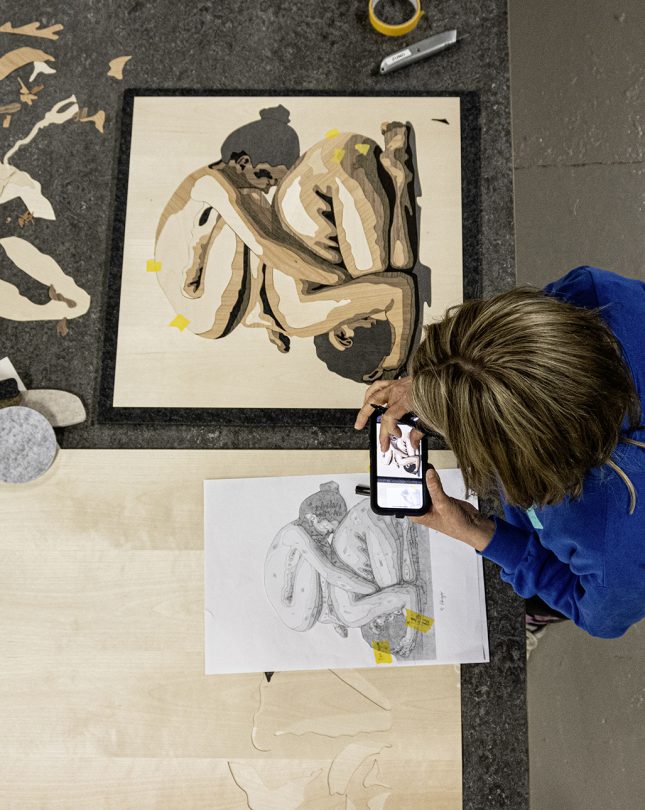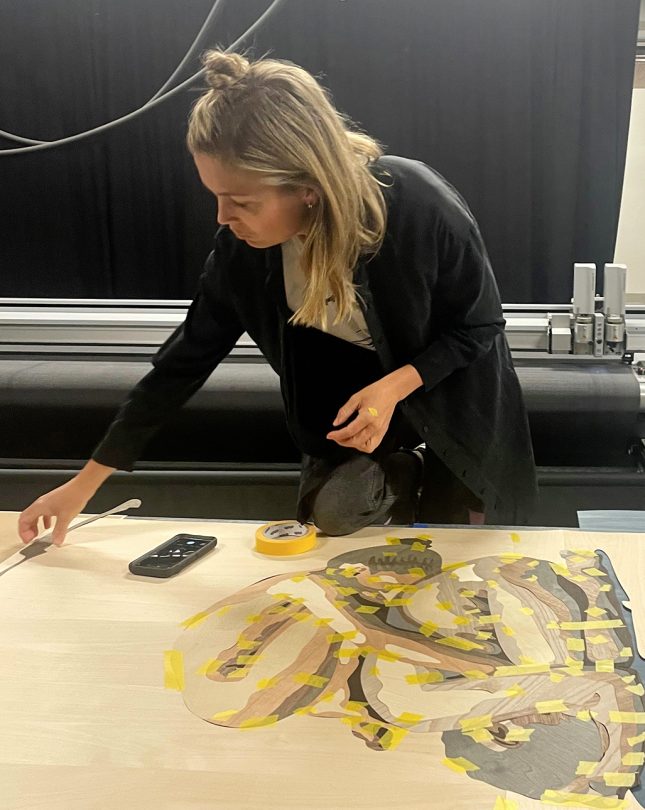Our latest news and views English
Underpinned by our Scandinavian design heritage, we bring you regular stories about architecture and interiors, exploring natural materials, acoustics, and the creation of safe and harmonious environments.
Fresh from her artistic partnership with Gustafs, Anna Hedström explains how she’s bringing a modern edge to the age-old craft of intarsia.

Collaboration is an important aspect of our creative approach at Gustafs. Working closely with architects helps us to make and refine products that help them realise their creative vision. More recently, we have started to hold innovation labs with artists to test what else can happen when creativity and craftsmanship merge.
Created by Swedish artist Anna Hedström for Gustafs, The Bodies is a new intarsia artwork that stretches our understanding of the potential of wood. The collaboration came about after we spotted Anna’s work in a local exhibition. “The Gustafs’s team were curious to find out if their CNC machine could be used to create intarsia art.” she explains.

An open brief from Gustafs plus access to our veneer workshop allowed Anna to build on her manual experience of creating intarsia. “It was exciting! Working with a larger CNC machine means you can scale the work up,” she says. “The increased scale meant that I had the chance to work with more fields within the artwork, which was interesting.”
Originally drawn to textile art, Anna began to branch out while studying at Konstfack, Sweden’s prestigious university for art, craft and design. “Wood is a new direction for me and my background in textiles allows me to take an unconventional approach,” she says. “Using wood in art means the viewer can touch the work; textile art is usually more delicate, and touching the artwork can cause it to deteriorate.”
Intarsia, a technique for inlaying wood, was first seen in north Africa in the seventh century. The craft spread to southern Europe and moved northwards.
The collaboration revealed the challenges as well as the possibilities of working on a bigger scale, as Anna explains: “With the CNC machine, the design needs to be processed by a computer, which results in a slight loss of control. Working manually means you can decide precisely where on the veneer you want to cut – that’s harder to achieve with a machine. We wanted to find out what happens when you introduce an element of chance into the process.”
“A benefit of working with a CNC machine is that it’s easy to test different veneers. You can select a piece of birch veneer and work in one direction with regards to the grain pattern; if you don’t like the result, you can choose another angle or swap the wood.”
The CNC machine injects intarsia with a modern edge, and the possibility of simplifying the process. Anna believes this can make intarsia art more suitable and affordable for public spaces. “We live in a digital time, yet people are rediscovering handicrafts and natural materials” she says. “It’s about experimenting with how intarsia can be contemporary.”
Although The Bodies does not have the acoustic properties that are the hallmark of many Gustafs products, Anna says she is excited by the idea of combining the artistic with the functional.
With a belief that natural materials are important in public environments, Anna sees the potential for a wider audience for intarsia, perhaps integrated into a wall or ceiling, and surrounded by wood panelling. “There’s always an issue that public art can be stolen; it often ends up protected or displayed where it can’t really be accessed,” she says. “Therefore, intarsia art is an interesting option, as it can be integrated directly into the walls and be made more accessible.”
